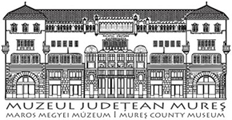Marisia - Maros Megyei Múzeum Évkönyve 30-31/3. (2011)
Liliana Iuga: Monument şi spaţiu public romănesc în Clujul interbelic. Cazul Catedralei Ortodoxe
Marisia ХХХ-ХШ Monument §i spatiu public romanesc ín Clujul interbelic. Cazul Catedralei Ortodoxé Liliana IUGA Shaping the Romanian Public Space in Interwar Cluj. The Case of the Orthodox Cathedral Abstract Using theories on the symbolic meaning of public monuments, the article analyzes the politics of nationalization of the urban public space in interwar Cluj. My case study is the Orthodox Cathedral, built between 1923 and 1933. Initiated by the local Orthodox elite, the project was part of an ambitious agenda of imposing a Romanian identification on the city center and thus counterbalance the „Hungarian” appearance of the city. Although acknowledging the importance of Bucharest in the succesful achievement of this project as part of the centralization process, I argue that the symbolical meaning of this monument was shaped at local level. Also, its achievement was possible due to the efforts of the Romanian Orthdox elite groups in the city, that aimed to create a dominant discourse and impose control over the urban space. 1. Repere teoretice §i istoriografice Monumentele constituie importante repere urbane, fiind de obicei amplasate Tn spatii publice importante, cum ar fi pietele centrale ale ora§elor. Investite cu о anumitä semnificatie simbolicä, monumentele functioneazä ín acela§i timp ca elemente de design urban. Unele monumente pot avea о functie practica, ca obiecte de utilitate publicä (de exemplu fäntänile), ín timp ce altele sunt catalogate drept adevärate opere de artä, fiind investite mai degrabä cu un mesaj simbolic. Cazul monumentelor arhitectonice este putin diferit, deoarece, Tn calitatea lor de edificii publice, sunt construite Tn primul ränd cu scopul de a Tndeplini о functie practicä. Cu toate acestea, stilul lor arhitectonic este adesea purtätorul unui mesaj specific. ín acest articol írni propun sä analizez cazul unui asemene monument, §i anume cel al Catedralei Ortodoxé din Cluj, construite íntre 1923 §i 1933. La nivei teoretic, doresc sä abordez acest subiect din perspectiva simbolisticii asociate monumentelor de for public, interpretändu-le ca forme de propagandä §i legitimare.1 2 Studiul acestor imagini „retorice” relevä о sehe de metafore care exprimä ?n mod vizibil puterea, constituind nucleul unui „spatiul ceremóniát'2 ín consecintä, de§i acest spatiul public este Ia nivei teoretic accesibil tuturor, designul säu poate genera coeziune sau divergente íntre membri unei comunitäti urbane, alienänd anumite grupuri, ín timp ce pentru altele reprezintä о confirmare a exercitiului puterii.3 Mai precis, in cadrul acestui demers urmäresc sä arát modul in care Catedrala Ortodoxé a fost conceputä ca expresie a ideii nationale, observänd negocierile care au avut loc intre actorii capabili sä-i influenteze designul §i 1 Allan Ellenius, Iconography, Propaganda and Legitimation, Clarendon Press, Oxford, 1998, p. 3. 2 ibidem 3 Edelman, Murray, ‘‘Space and the Social Order”, ín JAE, 32, nr. 2, noiembrie 1978, p. 6. 307 !
